The Atlantic Flyingfish is one of the most fascinating and unique species of marine life found in the ocean. Known for its remarkable ability to glide through the air, these oceanic aerial marvels are a sight to behold.
Atlantic Flyingfish are often seen leaping out of the water and soaring through the air, almost as if they were flying.
Contents
These gliding fish are found mainly in the Atlantic Ocean, from the coasts of Brazil to the eastern shores of the United States.
They are a true testament to the incredible diversity of the ocean’s wildlife, and their behavior and characteristics have captivated scientists and researchers for decades.
Key Takeaways
- The Atlantic Flyingfish is renowned for its unique ability to glide through the air
- They are found mainly in the Atlantic Ocean and are a remarkable example of the ocean’s biodiversity
- Their behavior and characteristics have fascinated scientists and researchers for decades
- Despite their aerial skills, Atlantic Flyingfish are still vulnerable to human activities and the impact of climate change
- Conservation efforts are necessary to protect these incredible creatures and ensure the long-term health of the ocean’s ecosystems
Atlantic Flyingfish Behavior

Atlantic Flyingfish are a unique species of fish known for their extraordinary flying abilities.
Their aerial locomotion sets them apart from other marine animals and has fascinated researchers for years.
The scientific name for the Atlantic Flyingfish is Cheilopogon melanurus, which translates to “black-tailed lip beard.”
Their ability to glide through the air is made possible by their wing-like pectoral fins, which are longer and more pointed than those of other fish.
The Atlantic Flyingfish use their fins to launch themselves out of the water and soar above the ocean’s surface.
They can reach heights of up to four feet and travel distances of up to 200 feet in a single flight.
This behavior is known as “exocoetidae,” which means “gliding fish.”
While the Atlantic Flyingfish primarily uses their flying abilities to evade predators, they also use them to cover more distance when searching for prey.
They feed on a variety of oceanic creatures, including zooplankton, crustaceans, and small fish.
Their aerial adaptation has also allowed them to migrate long distances, moving between pelagic habitats in the Atlantic ocean.
Atlantic Flyingfish are known to have a lifespan of up to three years, during which time they may migrate hundreds of miles.
The unique behavior of Atlantic Flyingfish has been studied extensively by researchers, who have sought to understand how they are able to glide for such long distances through the air.
Their aerodynamics have been compared to that of birds’ wings, with similarities in the way airflow is managed over their fins.
The gliding behavior of Atlantic Flyingfish is truly remarkable, allowing this species to thrive in the oceanic ecosystem and amaze marine enthusiasts and researchers alike.
Atlantic Flyingfish Habitat
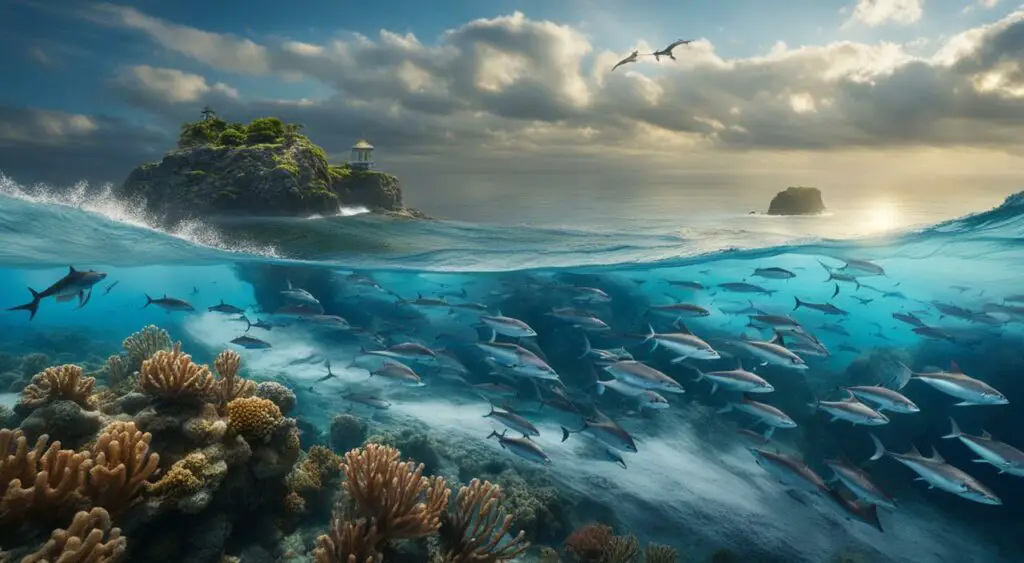
Atlantic Flyingfish are primarily found in pelagic habitats, which are the open waters of the ocean away from the coast.
They are well adapted to this habitat and are frequently observed gliding over the ocean’s surface.
These fish are distributed across the Atlantic coast, from Nova Scotia down to Argentina.
They are also found in the Gulf of Mexico and the Caribbean Sea, as well as the open waters of the Atlantic Ocean.
The presence of Atlantic Flyingfish is essential to the oceanic ecosystem, as they play a crucial role in the food web.
They are preyed upon by many oceanic wildlife species, such as seabirds and larger fish.
Their habitat is also shared with other pelagic creatures like squids, crustaceans, and jellyfish.
“Atlantic Flyingfish are found in pelagic habitats, the open waters of the ocean away from the coast. They are well adapted to this habitat and are frequently observed gliding over the ocean’s surface.”
Atlantic Flyingfish Diet

The Atlantic Flyingfish is a carnivorous species, preying on a variety of oceanic creatures, including plankton, small fish, and crustaceans.
These unique fish use their exceptional aerial abilities to hunt for food above the water’s surface, where they can spot their prey more easily.
Their diet is highly diverse and varies depending on their location and the specific ecosystem they inhabit.
In the open ocean, Atlantic Flyingfish primarily feed on plankton, including copepods and zooplankton.
In nearshore environments, they may consume small fish or crustaceans, such as shrimp and crabs.
The feeding behavior of Atlantic Flyingfish is an essential factor in maintaining a healthy marine ecosystem.
As predators, they play a crucial role in controlling the population of their prey species, preventing overpopulation and promoting species diversity.
However, these fish are also preyed upon by larger marine animals, such as tuna, marlin, and dolphins.
As a result, their hunting and feeding behavior must be agile and efficient to avoid becoming a meal for a predator.
The diet of Atlantic Flyingfish is dynamic and ever-changing, constantly adapting to the ever-shifting oceanic conditions.
Their ability to thrive on a diverse range of food sources is a testament to their remarkable adaptability and resilience.
Atlantic Flyingfish Reproduction

Atlantic Flyingfish are known for their unique ability to glide above water surfaces, but their reproductive behavior is equally fascinating.
The species is known to spawn throughout the year, but it varies depending on their location and the environmental conditions.
Spawning primarily occurs in the warmer months, and females produce multiple batches of eggs throughout the year.
A single female can produce up to 200 eggs per spawn, and the eggs are small and transparent.
The eggs float near the surface of the water and hatch within 48 hours of fertilization.
The larvae grow rapidly, and studies suggest that they have a high survival rate.
However, the exact population dynamics of Atlantic Flyingfish are not well understood and require further research.
Reproductive Behavior
Atlantic Flyingfish have complex reproductive behavior that involves aerial displays and acoustic communications.
Males have been observed jumping out of the water and making clicking noises to attract females.
Additionally, researchers have noted that Atlantic Flyingfish exhibit reproductive synchronicity, which means that males and females release their gametes at the same time.
This behavior increases the chance of fertilization and ensures that the larvae have a higher chance of survival.
Population Dynamics
The population dynamics of Atlantic Flyingfish are impacted by a variety of factors, including environmental conditions and fishing practices.
The species is not currently listed as endangered, but it is important to monitor their populations to ensure their continued survival.
Their reproductive patterns are essential to maintain healthy populations and ensure the species’ long-term survival.
Understanding the factors influencing their reproductive success is crucial to effective conservation and management strategies.
Atlantic Flyingfish and Ecosystem Interactions
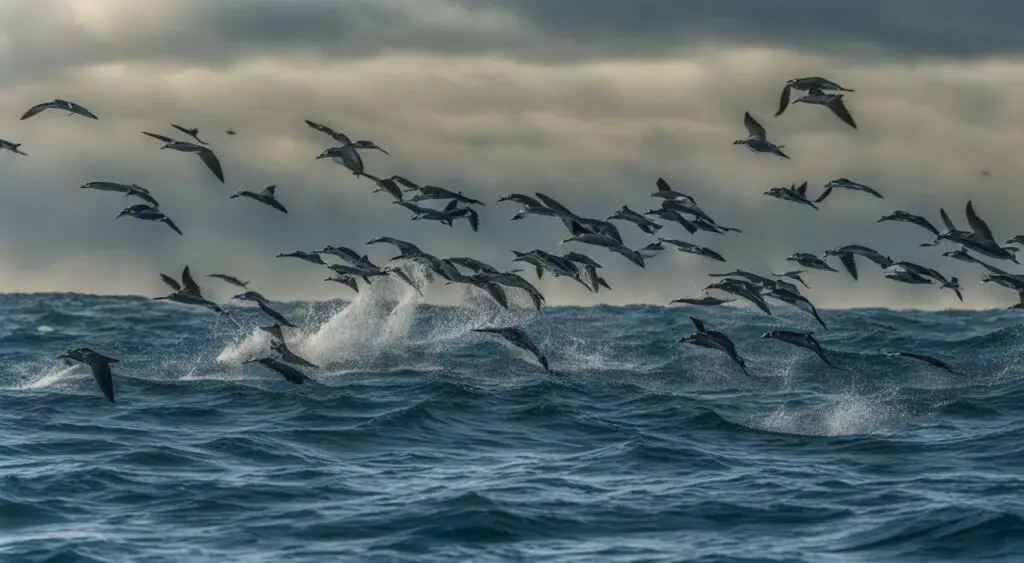
Atlantic Flyingfish play an important role in the oceanic ecosystem, serving as a major prey species for seabirds and other marine predators.
Their unique ability to glide through the air allows them to avoid potential threats in the water and seek out food sources in both pelagic and coastal areas.
Their migration patterns also impact the ecosystem, as they move from one area to another in search of suitable habitats and food sources.
By following ocean currents, Atlantic Flyingfish can travel great distances and contribute to the dispersion of nutrients and other vital resources throughout the ocean.
Seabirds such as gannets, frigatebirds, and terns are known to feed on Atlantic Flyingfish.
These interactions between predator and prey species are important for maintaining healthy populations and promoting biodiversity within the ecosystem.
| Species | Predator |
|---|---|
| Atlantic Gannet | Feeds on Atlantic Flyingfish during breeding season |
| Lesser Frigatebird | Feeds on Atlantic Flyingfish in open ocean areas |
| Royal Tern | Feeds on Atlantic Flyingfish in coastal areas |
Aside from their role as a prey species, Atlantic Flyingfish also have a significant impact on the predator-prey dynamics of the ecosystem.
By consuming a variety of oceanic creatures, they help regulate the populations of other marine animals and contribute to the overall balance of the ecosystem.
Overall, Atlantic Flyingfish are a vital component of the ocean’s biodiversity.
Their interactions with other species within the ecosystem highlight the complex and dynamic nature of marine biology, and underscore the importance of preserving and protecting these unique and remarkable creatures.
Atlantic Flyingfish Adaptations

The Atlantic Flyingfish has evolved a set of adaptations that allow it to glide and soar above the ocean’s surface, making it a remarkable aerial marvel.
Its unique aerial adaptations have attracted the attention of researchers and marine enthusiasts alike, leading to a deeper understanding of its behavior and physiology.
The most notable adaptation of the Atlantic Flyingfish is its pectoral fins, which have evolved into wing-like structures that enable it to stay aloft for extended periods.
These fins are supported by long bony extensions known as fin rays that provide stability while in flight.
They are also flexible, allowing the fish to adjust its gliding speed and direction.
In addition to its fins, the Atlantic Flyingfish has also undergone several physiological and morphological adaptations that aid in its aerial locomotion.
Its streamlined body shape reduces drag and improves aerodynamics, while its large eyes and enhanced visual processing allow it to navigate and locate potential predators and prey.
Other notable aerial characteristics of the Atlantic Flyingfish include a hydrodynamic body shape, strong muscles, and lightweight bone structure.
These adaptations allow it to generate lift and propulsion, as well as reduce its weight for improved flight efficiency.
Overall, the adaptations of the Atlantic Flyingfish demonstrate the incredible capacity of marine animals to evolve in response to their environment.
Their unique aerial adaptations provide valuable insights into the evolutionary processes that have shaped the ocean’s biodiversity, making them a fascinating and important species to study.
Conservation of Atlantic Flyingfish
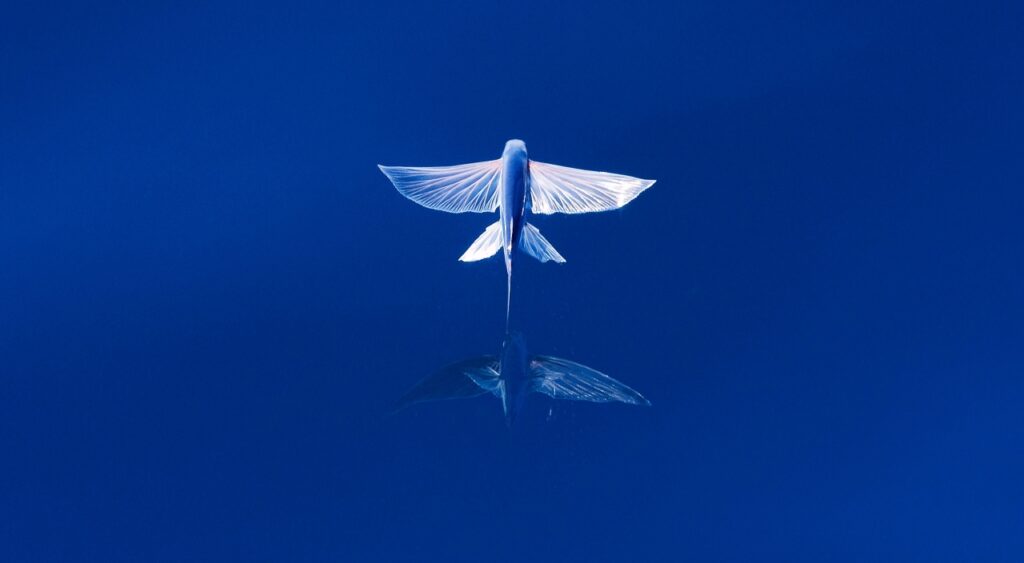
The Atlantic Flyingfish is currently listed as least concern on the International Union for Conservation of Nature (IUCN) Red List, which means that they are not facing any significant threats to their populations.
However, despite this, their conservation is still essential to maintain their essential role in the ocean’s ecosystem.
Marine conservation efforts, such as protection from overfishing and habitat destruction, are crucial to their continued survival.
The implementation of oceanic protection measures can guarantee the preservation of their habitats and the protection of their populations from human activities that may threaten their existence.
| Marine Wildlife Conservation Organization | Mission Statement |
|---|---|
| The Ocean Foundation | The Ocean Foundation is dedicated to supporting and promoting organizations focused on the conservation and protection of the ocean’s wildlife, including the Atlantic Flyingfish. |
| WWF | WWF’s mission is to conserve nature and reduce the most significant threats to the diversity of life on Earth, including oceanic species. |
| Oceana | Oceana is an international organization focused on protecting and restoring the world’s oceans, including the ecosystems and species that call them home. |
It is essential to establish responsible management practices, regulations, and policies that ensure the long-term sustainability of Atlantic Flyingfish populations and their habitats.
In conclusion, ongoing conservation efforts, as well as the establishment of marine wildlife protection measures.
Are essential to preserving the Atlantic Flyingfish’s role in the ocean’s ecosystem for future generations to come.
Atlantic Flyingfish and Human Interactions
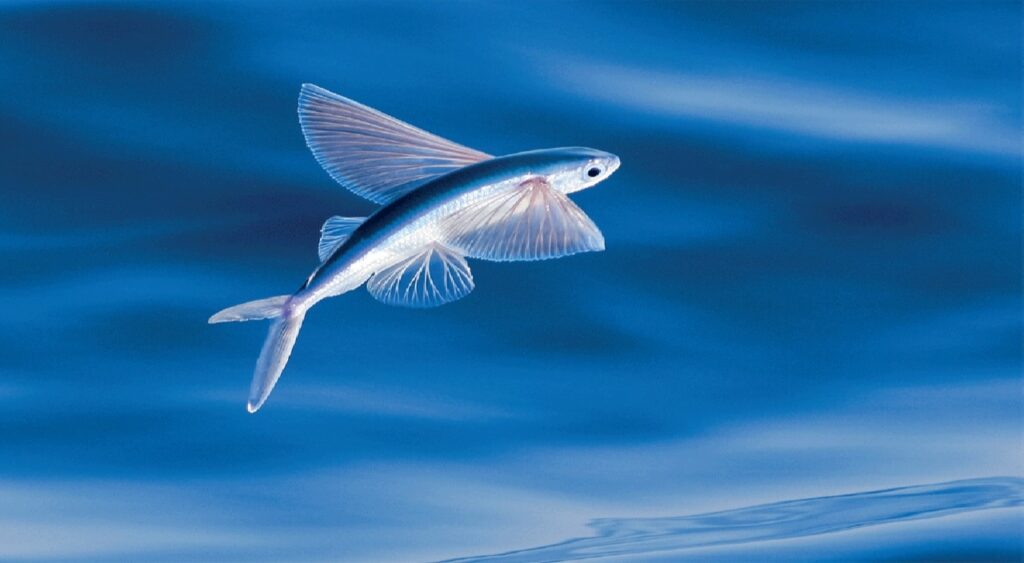
Conclusion
Atlantic Flyingfish are a marvel of the oceanic world, with their unique ability to glide through the air making them stand out among marine animals.
They have adapted remarkable aerial capabilities that enable them to stay airborne for long periods.
Their wing-like pectoral fins and streamlined body help them soar above the surface of the ocean.
The behavior, habitat, diet, reproduction, ecosystem interactions, adaptations, and conservation of Atlantic Flyingfish have been explored throughout this article.
Their presence in the ocean’s biodiversity highlights the importance of marine conservation efforts.
Especially with the increasing human activities that threaten their population.
By understanding the aerial evolution of Atlantic Flyingfish and the role they play in the oceanic ecosystem.
We become more aware of the symbiotic relationships present in the natural world.
As we continue to study these fascinating creatures, we learn how to better protect and preserve their populations and the oceanic environment as a whole.
Marine Biodiversity
Atlantic Flyingfish play an essential role in maintaining marine biodiversity.
They are a vital prey species for several predators, and the diversity of their diet supports a wide range of marine life.
By protecting their populations, we help ensure the health of the whole oceanic food web.
Aerial Evolution
The aerial evolution of Atlantic Flyingfish is a remarkable adaptation that allows them to cover greater distances and escape predators.
Their unique aerial locomotion has enabled them to thrive in the ocean’s open waters and has played a significant role in their success.
In conclusion, Atlantic Flyingfish are an incredible example of the wonders of marine life and the importance of preserving marine biodiversity.
The future of Atlantic Flyingfish populations relies on responsible management, conservation efforts, and a commitment to oceanic protection and stewardship.

FAQ
1. What is the Atlantic Flyingfish?
The Atlantic Flyingfish is a remarkable marine species known for its unique ability to glide through the air.
2. How do Atlantic Flyingfish glide through the air?
Atlantic Flyingfish glide through the air using their wing-like pectoral fins, which allow them to soar above the ocean’s surface.
3. Where do Atlantic Flyingfish prefer to habitat?
Atlantic Flyingfish prefer pelagic habitats and are distributed along the Atlantic coast.
4. What do Atlantic Flyingfish eat?
Atlantic Flyingfish have a diverse diet and consume various types of prey, playing a role as predators in the marine ecosystem.
5. How do Atlantic Flyingfish reproduce?
Atlantic Flyingfish reproduce through spawning, and their reproductive behavior influences population dynamics.
6. What are the interactions between Atlantic Flyingfish and other species?
Atlantic Flyingfish are an important prey species for seabirds, and their migration patterns impact predator-prey dynamics in the ocean.
7. What adaptations do Atlantic Flyingfish have for aerial locomotion?
Atlantic Flyingfish have unique fin structures, physiological, and morphological adaptations that make them well-suited for gliding through the air.
8. What is the conservation status of Atlantic Flyingfish?
The conservation status of Atlantic Flyingfish is relevant, and efforts are being made to protect and preserve their populations.
9. How do humans interact with Atlantic Flyingfish?
Humans interact with Atlantic Flyingfish through fishing practices, research initiatives, and marine stewardship efforts.
10. What is the significance of Atlantic Flyingfish in the marine ecosystem?
Atlantic Flyingfish contribute to the biodiversity of the ocean and reflect a remarkable evolution in aerial locomotion.
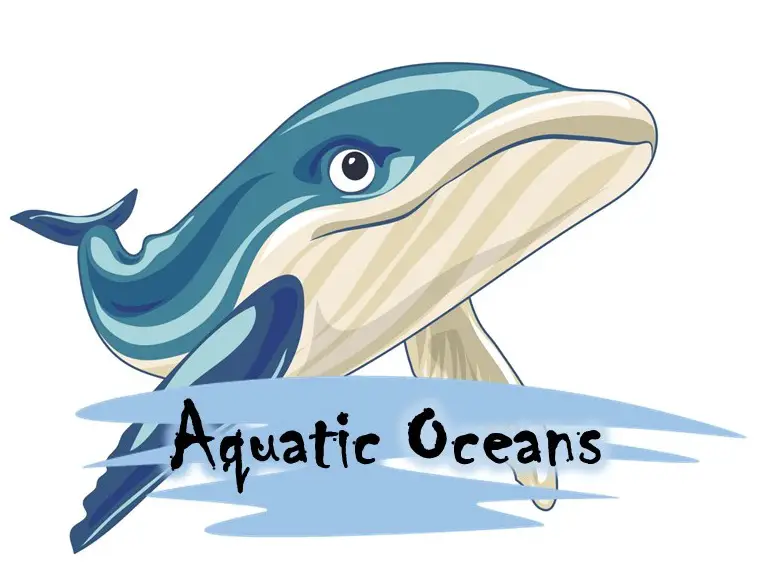
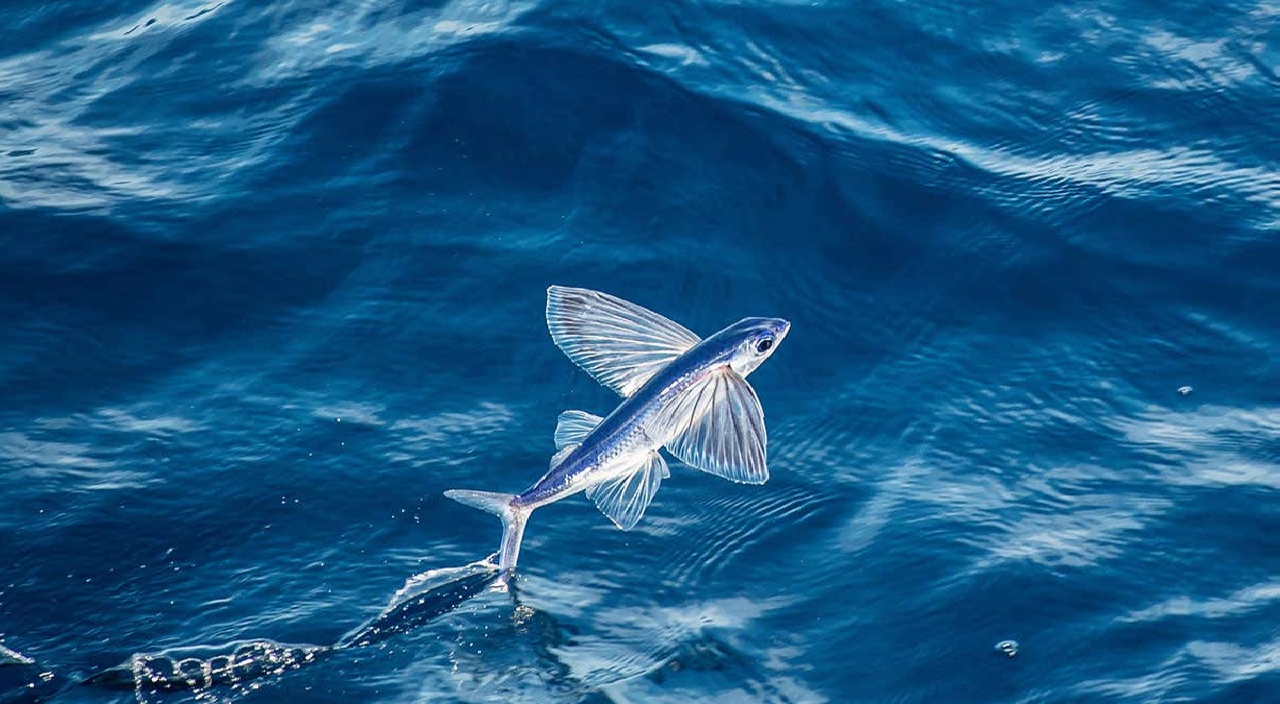
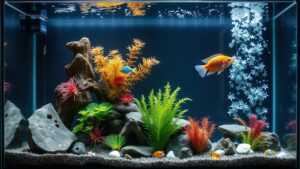

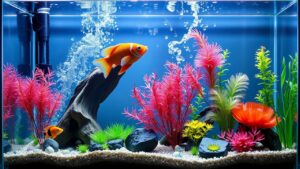

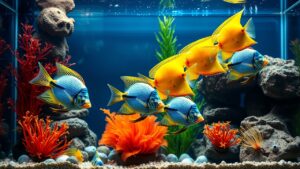


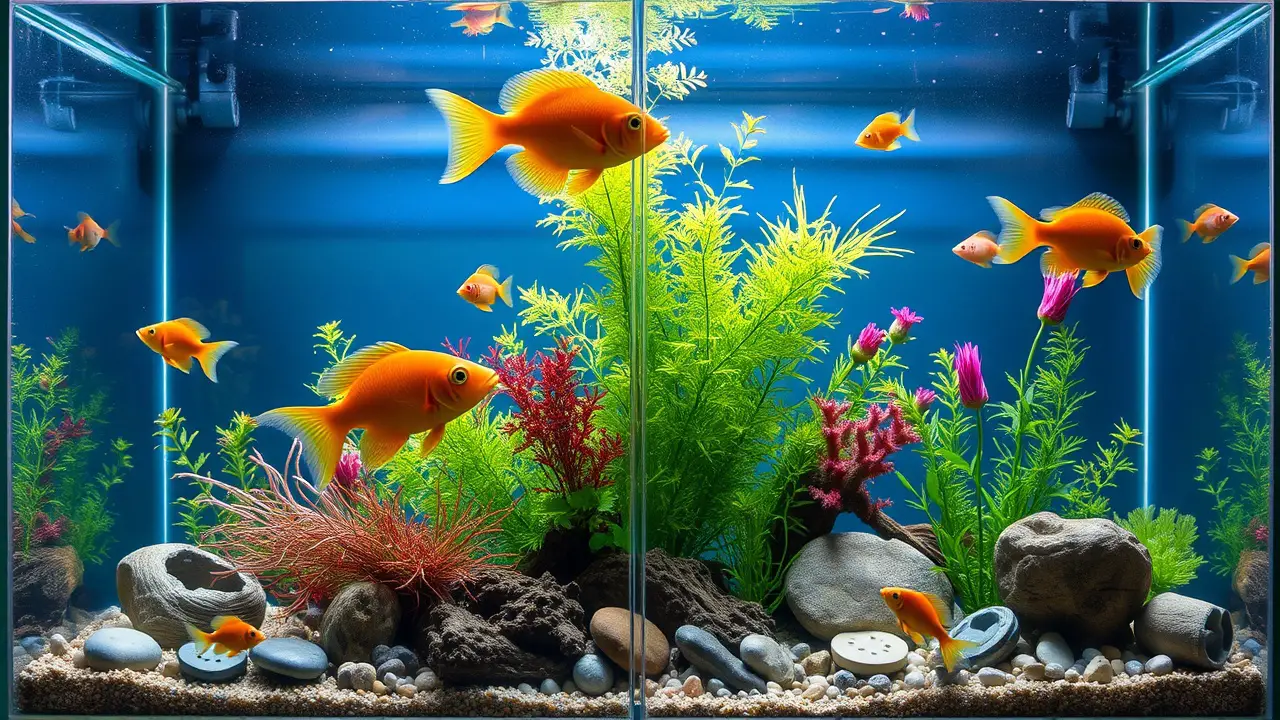

Leave a Reply